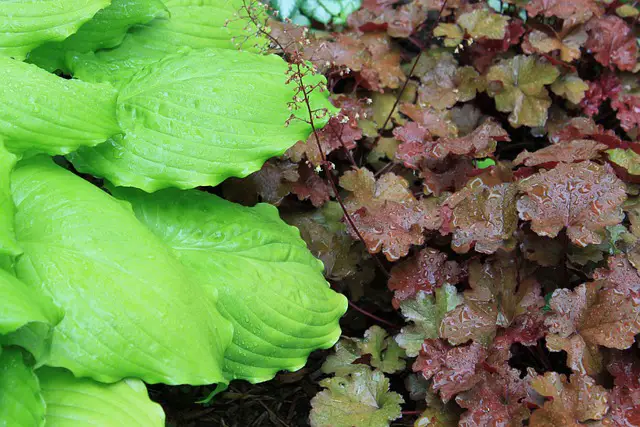Coral bells, also known as Heuchera, are popular garden plants that are valued for their attractive foliage and delicate flowers. However, one common problem that gardeners face when growing coral bells is brown leaves. Brown leaves can be caused by a variety of factors, including sunburn, disease, and pests.
Understanding the causes of coral bells turning brown is essential for maintaining healthy plants. Ideal growing conditions for coral bells include well-draining soil, partial shade, and regular watering.
However, even with the best care, coral bells can still develop brown leaves. In this article, we will explore the common reasons for brown leaves in coral bells and provide tips for caring for these beautiful plants.
Key Takeaways on Coral Bells Turning Brown
- Brown leaves in coral bells can be caused by a variety of factors, including sunburn, disease, and pests.
- Ideal growing conditions for coral bells include well-draining soil, partial shade, and regular watering.
- To care for coral bells, it is important to monitor their moisture levels, provide adequate shade, and address any pest or disease issues promptly.
Also don’t miss:
- Why Are My Coffee Plant Leaves Turning Brown?
- Why Are My Canna Lily Leaves Turning Brown?
- Why Are My Begonias Turning Brown
Understanding Coral Bells
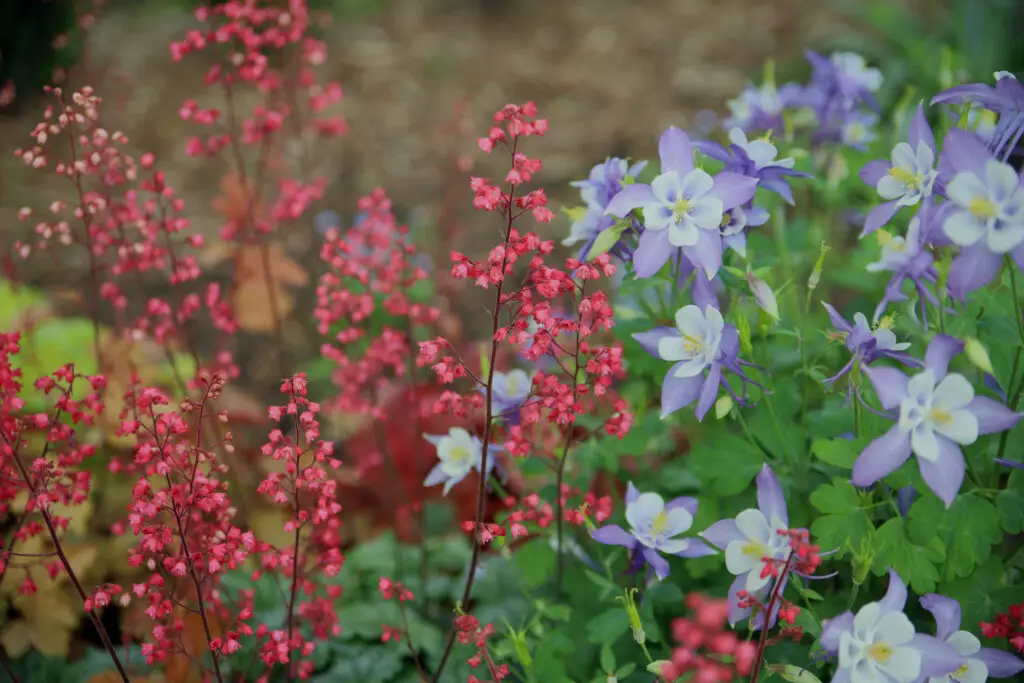
Coral Bells, also known as Heuchera, are a popular perennial plant that is grown for their attractive foliage and small bell-shaped flowers. The botanical name for Coral Bells is Heuchera, and it belongs to the Heuchera genus.
Coral Bells are available in a wide range of colors, including purple, green, maroon, and gold. The foliage of Coral Bells is rounded and comes in various shades, including lime green. The plant is known for its colorful foliage, which makes it an excellent choice for garden beds and borders.
Coral Bells are easy to grow and require minimal maintenance. They prefer well-drained soil and partial shade. Overwatering can lead to root rot, which can cause the leaves of the plant to turn brown.
Coral Bells are often grown for their foliage, but they also produce small bell-shaped flowers that bloom in the summer. The flowers of Coral Bells are usually white, pink, or red and are produced on long stems.
Ideal Growing Conditions for Coral Bells
Coral Bells, also known as Heuchera, are a popular perennial plant that is native to North America. They are known for their colorful foliage and delicate flowers. To ensure that your Coral Bells stay healthy and vibrant, it is important to provide them with the ideal growing conditions.
1. Light and Shade
Coral Bells can be grown in a wide range of light conditions, from full sun to shade. However, the foliage color and bloom are best when plants receive at least 4-6 hours of direct sunlight. In hot climates, it is recommended to provide some shade during the hottest part of the day to prevent sunburn.
2. Soil
Heuchera does best in rich, well-draining soil. They are tolerant of clay or rocky soils, but prefer a slightly acidic soil with a pH between 5.5 and 6.5. To improve drainage, it is recommended to mix in some sand or perlite. Coral Bells are also tolerant of salt, making them a good choice for coastal gardens.
3. Watering
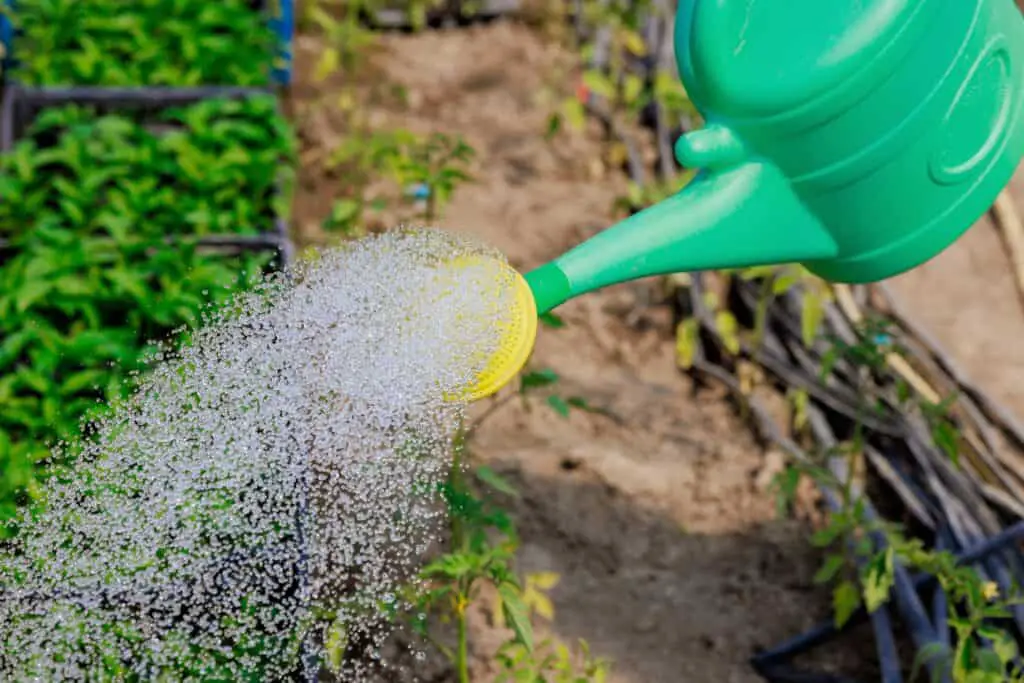
Coral Bells need consistent moisture to thrive, but do not like to be overwatered. They prefer to be kept slightly moist, but not waterlogged. In the summer, it may be necessary to water them more frequently to prevent drought stress. It is important to avoid getting water on the leaves, as this can lead to disease.
4. Temperature
Coral Bells are hardy in USDA zones 4-9. They are tolerant of cold temperatures and can survive freezing temperatures in the winter. In hot climates, they may benefit from some afternoon shade to prevent heat stress.
5. Containers
Coral Bells can be grown in containers or pots, making them a good choice for small gardens or balconies. It is important to choose a container that is large enough to accommodate the plant’s root system and to provide good drainage. In containers, Coral Bells may require more frequent watering than plants grown in the ground.
Coral Bells Turning Brown – 4 Common Problems
Coral bells are a popular perennial plant known for their attractive foliage and delicate flowers. However, it is not uncommon for the leaves of these plants to turn brown, which can be a sign of an underlying problem. Here are some common reasons why coral bells leaves turn brown:
1. Sunburn
Coral bells are shade-loving plants that thrive in partial shade or filtered sunlight. When exposed to direct sunlight, the leaves can become scorched and turn brown.
This is because the intense heat of the sun damages the plant’s cells, causing the leaves to dry out and die. To prevent sunburn, it is important to plant coral bells in a location that receives shade during the hottest part of the day.
2. Disease
Several fungal diseases can cause coral bells leaves to turn brown. Rust, leaf spot, stem rot, and root rot are among the most common diseases that affect these plants.
Rust, for example, is a fungal disease that causes orange or brown spots on the leaves, while leaf spot causes circular brown spots with yellow halos. Stem and root rot, on the other hand, cause the plant to wilt and die. To prevent these diseases, it is important to plant coral bells in well-draining soil and avoid overwatering.
3. Overwatering
Overwatering is a common cause of brown leaves in coral bells. When the plant is overwatered, the roots become waterlogged, which can lead to root rot and other fungal diseases.
In addition, overwatering can cause the leaves to turn yellow or brown and become crispy. To prevent overwatering, it is important to water coral bells only when the soil is dry to the touch.
4. Dehydration
On the other hand, underwatering can also cause coral bells leaves to turn brown. When the plant is not watered enough, the leaves can become dehydrated, which can cause them to turn crispy and brown. To prevent dehydration, it is important to water coral bells regularly and ensure that the soil is moist but not waterlogged.
Caring for Coral Bells

Coral bells are easy to care for, but they do require some maintenance to keep them healthy and looking their best. Here are some tips for caring for your coral bells:
1. Transplanting
If your coral bells are not doing well in their current location, it may be time to transplant them. Transplanting is best done in the spring or fall, and it is important to choose a location with well-drained soil and partial shade. Coral bells do not like to be in direct sunlight for extended periods of time, so a location with dappled shade is ideal.
2. Mulch and Compost
Mulching around your coral bells can help retain moisture in the soil and suppress weeds. A layer of compost can also be added to the top of the soil to provide nutrients for the plants. Be sure to keep the mulch and compost away from the crown of the plant to prevent rot.
3. Fertilizer
Coral bells do not require a lot of fertilizer, but a slow-release fertilizer can be added in the spring to give them a boost. Avoid fertilizers high in nitrogen, as this can cause the leaves to grow too quickly and become more susceptible to disease.
4. Maintenance
Regular maintenance is important for keeping coral bells healthy. Deadheading spent flowers will encourage new growth and prevent the plant from going to seed. Pruning back any damaged or dead leaves will also help keep the plant looking its best.
5. Watering
Coral bells prefer consistently moist soil, but they do not like to be overwatered. Watering deeply once a week should be sufficient, but adjust the frequency based on the weather and soil conditions. Coral bells can be sensitive to drought, so be sure to water them during dry spells.
6. Shade and Sunlight
Coral bells prefer partial shade, but they can tolerate full sun if they are kept well-watered. Direct sunlight for extended periods of time can cause the leaves to scorch and turn brown.
7. Soil
Coral bells prefer well-drained soil and do not do well in heavy clay soil. Amending the soil with compost can help improve drainage and provide nutrients for the plant..
Pests and Diseases in Coral Bells
Coral Bells are generally hardy plants that are not prone to many pests and diseases. However, they can still fall prey to a few common issues. In this section, we will discuss some of the most common pests and diseases that can affect Coral Bells.
Pests

One of the most common pests that can affect Coral Bells is the Vine Weevil. These insects can devour the roots of the plant, causing it to die. If you notice that your Coral Bells are wilting or the leaves are turning brown, it may be a sign of a Vine Weevil infestation. To get rid of these pests, you can use a biological control agent or an insecticide.
Another pest that can affect Coral Bells is the Whitefly. These tiny insects can suck the sap from the leaves of the plant, causing them to turn yellow and wilt. To get rid of Whiteflies, you can use insecticidal soap or neem oil.
Diseases
Coral Bells can also fall prey to a few fungal diseases. One of the most common fungal diseases that can affect Coral Bells is Powdery Mildew. This disease can cause a white, powdery coating to appear on the leaves of the plant. To prevent Powdery Mildew, make sure to keep the foliage dry and avoid overcrowding the plants.
Another fungal disease that can affect Coral Bells is Rust. This disease can cause orange or brown spots to appear on the leaves of the plant. To prevent Rust, make sure to water the plants at the base and avoid getting the foliage wet.
Coral Bells can also be affected by Leaf Spot, Stem Rot, and Root Rot. These diseases are caused by fungus and can cause the leaves of the plant to turn brown and wilt. To prevent these diseases, make sure to plant Coral Bells in well-draining soil and avoid overwatering.
If you notice any signs of pests or diseases on your Coral Bells, it is important to take action quickly to prevent further damage. You can use fungicides or insecticides to get rid of pests and diseases, but it is important to follow the instructions carefully to avoid damaging the plant.
Varieties of Coral Bells
Coral bells, also known as Heuchera, are a popular perennial plant that comes in a variety of colors and textures. They are known for their attractive foliage and delicate bell-shaped flowers that bloom in the summer. Here are some of the most popular varieties of coral bells:
- Purple Palace: This variety has deep purple foliage that is perfect for adding contrast to your garden. It is a semi-evergreen plant that produces pink flowers in the summer.
- Green Spice: This variety has green leaves with a silver overlay that gives it a unique texture. It produces white flowers in the summer and is a great choice for a shady spot in your garden.
- Maroon Beauty: This variety has maroon foliage that is perfect for adding drama to your garden. It produces white flowers in the summer and is a great choice for a sunny spot in your garden.
- Golden Zebra: This variety has golden foliage with dark green veins that give it a unique look. It produces white flowers in the summer and is a great choice for a sunny spot in your garden.
- Fire Chief: This variety has bright red foliage that is perfect for adding a pop of color to your garden. It produces white flowers in the summer and is a great choice for a sunny spot in your garden.
Coral bells are a versatile plant that can be planted in a variety of locations. They prefer well-draining soil and partial shade, but can also tolerate full sun in cooler climates. They are a great choice for borders, rock gardens, and containers.
Coral Bells and Wildlife
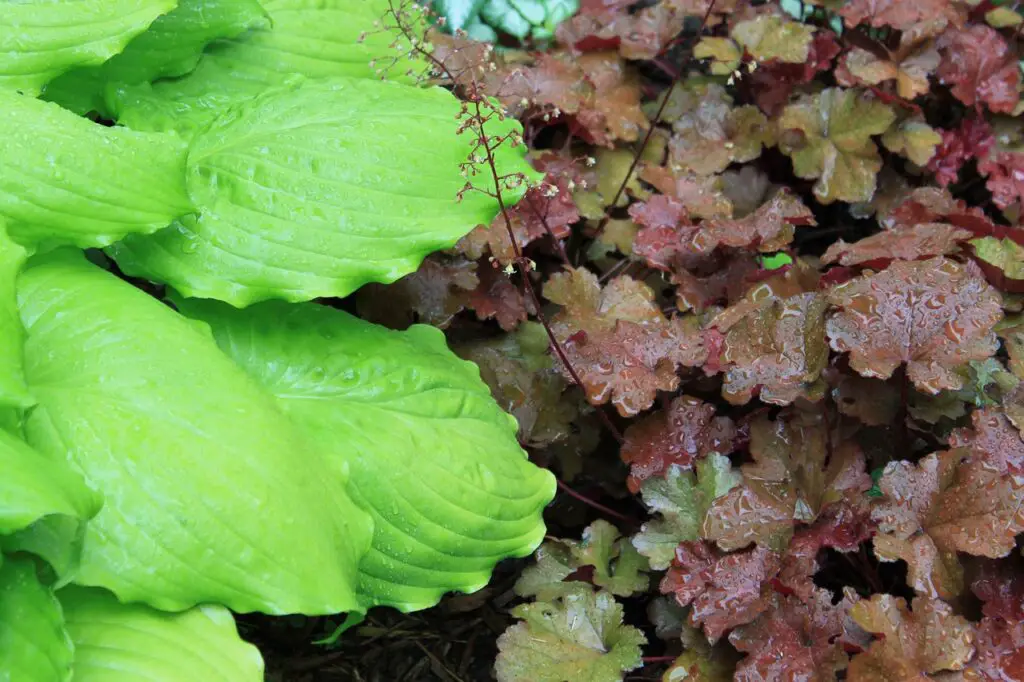
Coral Bells, also known as Heuchera, are a popular choice among gardeners due to their vibrant foliage and easy-care nature. However, they are not just appealing to humans. Wildlife such as hummingbirds and butterflies are also attracted to these plants.
Hummingbirds are known to be drawn to the bright, tubular flowers of Coral Bells. These small birds are attracted to the nectar found within the flowers and will often hover around the plant to feed. By planting Coral Bells in your garden, you can help provide a food source for these beautiful creatures.
Butterflies are also attracted to the nectar of Coral Bells flowers. These delicate insects are not only beautiful to watch but also play an important role in pollinating plants. By providing a food source for butterflies, you can help support the ecosystem in your garden.
While Coral Bells are attractive to wildlife, it is important to note that cut blooms may not be as appealing. Once the flowers are cut, the nectar is no longer available, and the plant may not be as attractive to hummingbirds and butterflies. Therefore, it is recommended to leave the flowers on the plant to provide a continuous food source for wildlife.
Coral Bells in Different Seasons
Coral Bells, also known as Heuchera, is a popular perennial plant that is known for its attractive foliage and delicate flowers. However, like any other plant, it requires proper care and attention to thrive. One of the common problems that gardeners face is the browning of Coral Bells leaves. This section will discuss how different seasons affect the growth and health of Coral Bells.
1. Spring
In the spring, Coral Bells start to emerge from their winter dormancy and produce new leaves. This is the time when gardeners should start to monitor their plants for any signs of disease or pests.
Coral Bells are susceptible to a variety of fungal diseases, such as rust and powdery mildew, which can cause the leaves to turn brown and die. To prevent these diseases, gardeners should ensure that the plants are not overcrowded, and they should remove any dead or diseased leaves.
2. Summer
Summer is the peak growing season for Coral Bells. The plants produce their signature flowers during this time, which can attract pollinators to the garden. However, the hot and dry weather can cause the leaves to turn brown and crispy.
To prevent this, gardeners should ensure that the plants receive enough water and are planted in a location that provides some shade during the hottest part of the day.
3. Fall
In the fall, Coral Bells start to prepare for winter dormancy. The plants may produce a second flush of growth during this time, which can be vulnerable to frost damage. Gardeners should monitor the weather and protect the plants if necessary. Additionally, gardeners should remove any dead or diseased leaves before the plants go dormant.
4. Early Spring
In the early spring, Coral Bells start to emerge from their winter dormancy. This is the time when gardeners should start to prepare the plants for the growing season ahead. Gardeners should remove any dead or diseased leaves and apply a slow-release fertilizer to provide the plants with the nutrients they need to grow.
Troubleshooting Common Problems in Coral Bells
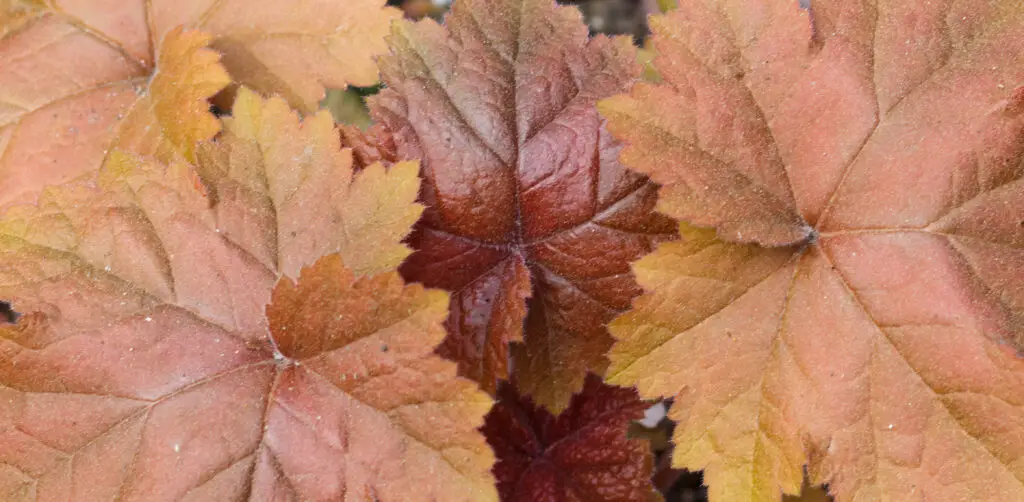
Coral Bells are a popular perennial plant that can add a splash of color to any garden. However, like all plants, they are not immune to problems. Here are some common issues that may cause Coral Bells to turn brown, yellow, or red:
Sunburn
Coral Bells are sensitive to direct sunlight, especially during the hottest part of the day. When exposed to too much sun, the leaves may turn brown and crispy. To prevent sunburn, move the plant to a shaded area or provide some sort of shade, such as a canopy or umbrella.
Disease
Coral Bells are susceptible to a number of fungal diseases, including rust, leaf spot, stem rot, and root rot. The symptoms of these diseases can include brown or yellow leaves, as well as wilting or stunted growth.
To prevent disease, make sure the plant is not overwatered and has good drainage. If you suspect a fungal disease, remove any infected leaves or stems and treat the plant with a fungicide.
Overwatering
Overwatering is a common problem with Coral Bells, and can lead to root rot and other issues. Signs of overwatering include yellow leaves, wilting, and a mushy or rotten smell coming from the soil. To prevent overwatering, make sure the plant is in well-draining soil and only water when the top inch of soil is dry to the touch.
Underwatering
On the other hand, underwatering can also cause Coral Bells to turn brown and crispy. Signs of underwatering include dry, brittle leaves and a wilted appearance. To prevent underwatering, make sure the plant is watered regularly, especially during hot weather or dry spells.
Frequently Asked Questions
What causes brown spots on coral bells?
Brown spots on coral bells can be caused by several factors, including overwatering, fungal infections, sunburn, pest infestations, and nutrient deficiencies. It is important to identify the root cause of the brown spots in order to treat the problem effectively.
Why do coral bells turn brown?
Coral bells can turn brown due to sunburn, too little water, disease, or overwatering. To prevent sunburn, it is important to protect coral bells from the hot afternoon sun. Coral bells require constant moisture, but not standing water. Overcrowding plantings and planting in poorly-drained soil can increase the risk of disease.
What are common diseases that affect coral bells?
Common diseases that affect coral bells include powdery mildew, leaf spot, and rust. Powdery mildew is a fungal disease that appears as a white, powdery coating on the leaves.
Leaf spot is a fungal disease that causes brown spots on the leaves. Rust is a fungal disease that causes orange or yellow spots on the leaves.
How much water do coral bells need?
Coral bells require constant moisture, but not standing water. The roots need to be kept moist, but not waterlogged. The amount of water needed depends on the amount of sunlight the plant receives. The more sunlight it receives, the more water it will need.
What are some signs that coral bells are not getting enough water?
Signs that coral bells are not getting enough water include wilting, yellowing leaves, and brown spots on the leaves. It is important to water coral bells regularly and to ensure that the soil is consistently moist.
What are some tips for caring for coral bells during the winter?
During the winter, it is important to top-dress the soil with compost, remove and dispose of any diseased foliage, and mulch crowns well to prevent heaving out of the ground after freezes. In early spring, trim off brown foliage.
If growing in containers, protect from cold winds and rain, and stop watering while they are dormant.

Hey, I’m Lisa and I’ve been an avid gardener for over 30 years. I love writing, talking and living in the garden! Feel free to connect with me on my socials below

